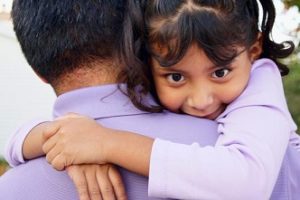| Organization |
Program |
Bucket |
2023 HSSN Funding Amount |
| Blue Sky Bridge |
Advocacy, Intervention and Education Services |
Individual and Family Supports |
$37,000.00 |
| Boulder County AIDs Project |
HIV Care Services and Prevention Services |
Health and Wellbeing |
$85,982 |
| Boulder County Department of Public Health |
Infant and Child Mental Health |
Health and Wellbeing |
$61,940 |
| Boulder Housing Partners |
Bringing School Home |
Housing and Homelessness Prevention |
$55,968.00 |
| Boulder Shelter for the Homeless |
Coordinated Entry |
Housing and Homelessness Prevention |
$142,500.00 |
| Boulder Shelter for the Homeless |
Emergency Solutions Grant Case Management |
Housing and Homelessness Prevention |
$70,955.00 |
| Boulder Shelter for the Homeless |
Permanent Supportive Housing Case Management |
Housing and Homelessness Prevention |
$110,000.00 |
| Boulder Shelter for the Homeless |
Housing Focused Shelter |
Housing and Homelessness Prevention |
$583,000.00 |
| Boulder Valley Women’s Health |
Subsidized Reproductive & Sexual Health Services and Education |
Health and Wellbeing |
$232,000 |
| City of Boulder |
Mediation and Facilitation Services |
Housing and Homelessness Prevention |
$62,100.00 |
| Clinica Family Health Services* |
Primary Health Care with Integrated Dental and Mental Health Care for Medically Underserved Boulder County Residents |
Health and Wellbeing |
$959,000 |
| Community Food Share* |
Food Access and Support for Boulder County Residents and Non-Profits |
Health and Wellbeing |
$600,000 |
| Dental Aid |
General Operations |
Health and Wellbeing |
$210,000 |
| Early Childhood Council of Boulder County |
Access to Quality Child Care |
Education and Skill Building |
$152,145.00 |
| Emergency Family Assistance Association (EFAA) |
Housing Stabilization Program |
Housing and Homelessness Prevention |
$106,655.00 |
| Emergency Family Assistance Association (EFAA) |
Family Resource Center |
Individual and Family Supports |
$413,985 |
| Focus Reentry |
One Stop Shop Focus on Housing Program |
Housing and Homelessness Prevention |
$44,442.00 |
| Homeless Outreach Providing Encouragement (HOPE) |
Coordinated Entry, Diversion, Housing Focused Shelter and Street Outreach |
Housing and Homelessness Prevention |
$100,000.00 |
| Jewish Family Services |
Mental Health Services |
Health and Wellbeing |
$165,000 |
| Lyons Emergency and Assistance Fund (LEAF) |
Mental Wellness |
Health and Wellbeing |
$51,161 |
| Mental Health Partners |
General Operations |
Health and Wellbeing |
$3,749,600 |
| Mental Health Partners |
Community Based Services |
Health and Wellbeing |
$415,000 |
| Mental Health Partners |
Withdrawal Management |
Health and Wellbeing |
$690,000 |
| Mental Health Partners |
Prevention Intervention Program |
Health and Wellbeing |
$194,001.00 |
| Mental Health Partners |
Jail Mental Health Services |
Health and Wellbeing |
$139,135.00 |
| Mother House |
Wrap Around Supports to Homeless Women, Non-Binary and Trans Folks in Boulder County |
Housing and Homelessness Prevention |
$100,000.00 |
| Nederland Food Pantry |
Food Pantry |
Health and Wellbeing |
$31,520 |
| OUR Center |
Housing Stabilization Program |
Housing and Homelessness Prevention |
$153,000.00 |
| OUR Center |
Peak2Peak Consultant |
Individual and Family Supports |
$20,160 |
| OUR Center |
Family Resource Center |
Individual and Family Supports |
$572,860 |
| OUT Boulder |
Mental Health Program |
Health and Wellbeing |
$155,000 |
| Safe Shelter of St. Vrain Valley |
Housing Stabilization Program |
Housing and Homelessness Prevention |
$54,448.00 |
| Safe Shelter of St. Vrain Valley |
Safe Shelter Domestic Violence Victim Services/General Operations |
Individual and Family Supports |
$114,000.00 |
| Salud* |
Access to Comprehensive Primary Care Services |
Health and Wellbeing |
$565,846.00 |
| Sister Carmen Community Center |
Parent Education and Family Development Credential Professional Development |
Education and Skill Building |
$79,000.00 |
| Sister Carmen Community Center |
Housing Stabilization Program |
Housing and Homelessness Prevention |
$114,329.00 |
| Sister Carmen Community Center |
Family Resource Center |
Individual and Family Supports |
$533,200 |
| Sister Carmen Community Center |
Food and Nutrition Classes |
Health and Wellbeing |
$27,400 |
| Safehouse Progressive Alliance for Nonviolence (SPAN) |
Housing Stabilization Program |
Housing and Homelessness Prevention |
$50,375.00 |
| Safehouse Progressive Alliance for Nonviolence (SPAN) |
Services for Domestic Violence Survivors |
Housing and Homelessness Prevention |
$217,715.00 |
| St. Vrain Valley School District |
Project Launch Elementary and Middle School |
Education and Skill Building |
$500,000.00 |
| TGTHR |
Housing Stabilization Program |
Housing and Homelessness Prevention |
$32,603.00 |
| TGTHR |
Residential Services |
Housing and Homelessness Prevention |
$48,904.00 |
| TGTHR |
Supportive Housing Program |
Housing and Homelessness Prevention |
$124,200.00 |
| The Inn Between of Longmont |
Supportive Housing Program |
Housing and Homelessness Prevention |
$84,500.00 |
| TLC Learning Center |
Early Childhood Education and Pediatric Therapeutic Services |
Education and Skill Building |
$40,000.00 |
| Wild Plum Center |
General Operations |
Education and Skill Building |
$71,000.00 |
| YWCA of Boulder County |
Persimmon Early Learning |
Education and Skill Building |
$173,500.00 |
| Total 2023 Funding |
$13,295,129.00 |
| * denotes that organization received a one time increase to their budget to address the impact of the end of the public health emergency on programs and services. |




